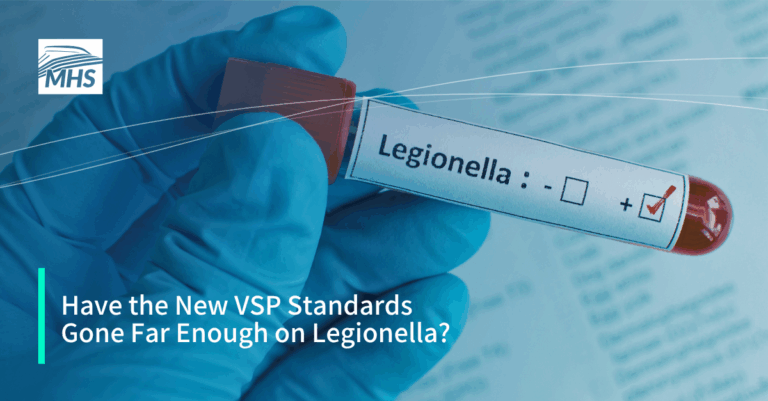They say change is inevitable, and “they” are right: it most certainly is. Nothing remains the same forever. Yet despite this inescapable truth, change often sparks discomfort. As Mary Shelley, author of the gothic novel Frankenstein, observed, “Nothing is so painful to the human mind as a great and sudden change.”
From an evolutionary perspective, our brains are hardwired to prefer predictability. The prefrontal cortex—the part responsible for decision-making and problem-solving—can become overwhelmed when faced with an abrupt change. Behavioral economists Daniel Kahneman and Amos Tversky captured this instinct in the 1970s with their Prospect Theory: given the choice, we tend to favor known outcomes, even unfavorable ones, over uncertain alternatives.
Perhaps this cognitive bias helps explain some of the resistance to the newly released 2025 VSP Environmental Public Health Standards. For the first time, the program’s scope has expanded beyond Acute Gastroenteritis (AGE) prevention to include surveillance measures for Legionella spp.
But not everyone is reassured.
Many public health professionals argue that while the inclusion of Legionella is a welcome and long-overdue step forward, the updated standards don’t go far enough. The absence of specified control measures, and the complete omission of any reference to Water Safety Plans, risk giving cruise operators a false sense of security. In doing so, they argue, the new framework may inadvertently increase the likelihood of Legionella exposure onboard.
What the New Standards Do and Don’t Require
Change is not always easy, especially when it involves new health and safety standards. The cruise industry has shown it can lead on big issues such as environmental sustainability. When it comes to regulation, however, there’s still a strong preference for self-regulation over external oversight, particularly in areas that affect operations and cost.
And the updates to the VSP water safety requirements affect both.
Cruise ships must now sample their potable water systems for Legionella at least every six months, with the number of samples determined by vessel size and system complexity. Additionally, all spa pools, whirlpool spas, and heated jetted tubs must be sampled at least every three months, unless the vessel has met both of the following criteria for the past two years, in which case testing may be reduced to every six months:
- No positive Legionella test results, and
- No legionellosis cases associated with travel on the ship
These new measures were primarily introduced by the CDC in response to reports linking outbreaks of Legionnaires’ disease to private balcony hot tubs on cruise ships. However, the standards stop short of offering a comprehensive prevention strategy for Legionella.
For instance, there are no clear requirements regarding material selection, temperature regulation, or monitoring and flushing to prevent stagnation. These are all critical factors in preventing Legionella growth. More concerning still is the absence of any reference to implement a Water Safety Plan, the internationally recognized framework for managing risks within water systems.
This creates a paradox: operators may fulfill the letter of the standards without addressing the actual sources of risk.
You Can’t Sample Your Way to Safety
J.D. Salinger wrote in The Catcher in the Rye that “Certain things, they should stay the way they are. You ought to be able to stick them in one of those big glass cases and just leave them alone.” It’s a nice sentiment, but not one that works for Legionella prevention.
Routine testing can help identify the presence of the bacteria, but it won’t prevent it. You can’t sample your way to safety. Without sufficient prevention measures in place, operators may miss early warning signs, rely too heavily on reactive testing, or implement ad hoc measures that lack consistency.
The inclusion of Legionella in the VSP standards marks a notable shift for a program historically focused on gastrointestinal illness. But it’s important to recognize the context in which these changes were made.
The VSP operates under the U.S. Public Health Service Act, which is designed to prevent the introduction and spread of communicable diseases into the country. Since Legionella is not classified as a communicable disease like norovirus, its inclusion already stretches the bounds of that mandate.
Coupled with the mass redundancies at the CDC in recent months and the fact that the VSP is funded largely by the same sector it regulates, the standards reflect a cautious but deliberate balancing act. These limitations aren’t oversights: they’re outcomes of practical and political constraints.
Nonetheless, from a public health standpoint, these limitations only reinforce the need for stronger internal action. Cruise lines shouldn’t wait for regulation to catch up; they have an opportunity to lead. A robust, ship-specific Water Safety Plan remains the most reliable framework for protecting guests and crew.
Moving Beyond Compliance
Albert Einstein once said, “The world as we have created it is a process of our thinking. It cannot be changed without changing our thinking.”
That’s the challenge—and opportunity—facing the cruise industry today. The 2025 VSP standards represent meaningful progress, but they are not a complete roadmap for Legionella prevention. They are the floor, not the ceiling (or the “deck,” not the “deckhead,” if you prefer the nautical terminology).
Waiting for stricter regulations is a gamble with public health and consumer trust. It also overlooks a simple truth: regulation is not the only driver of action. The absence of explicit VSP standards doesn’t absolve us of responsibility or ambition.
There’s a reason Water Safety Plans (WSPs) are considered the gold standard for proactive water system management. A well-designed WSP identifies potential sources of contamination, assesses the risks associated with each, and outlines clear control measures. It includes procedures for verification, documentation, and regular review, creating a living framework that adapts as operations evolve.
In the context of cruise ships, this kind of proactive management is essential.
The thinking that created the current status quo won’t solve its shortcomings. To prevent the next Legionella outbreak, we need a shift in mindset, because when it comes to water safety, doing only what’s required is not enough.

